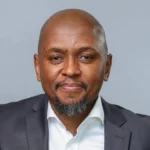Former Eskom CEO and current MP for the MK party, Brian Molefe, has called on Eskom to implement prepaid electricity across South Africa to curb the rising municipal debt. Molefe’s comments come as Eskom revealed to Parliament that municipal debt has ballooned to R90 billion, increasing by R1.5 billion each month. Eskom’s Municipal Debt Relief programme has struggled, with many municipalities failing to meet debt-relief conditions, leading to an annual debt increase exceeding R10 billion.
Molefe’s Call for Prepaid Electricity
Molefe’s proposal focuses on shifting municipalities to a prepaid model to reduce Eskom’s exposure to long-term debt accrual. “What will it take to put the whole of South Africa on prepaid? In that way, a municipality has to prepay for electricity, eliminating the problem of long-term arrears,” Molefe explained. He referenced an earlier project known as the SMS (Soweto, Midrand, Sandton) project, which aimed to introduce prepaid electricity in those areas.
By having consumers pay in advance, Molefe argued that Eskom could reverse its financial struggles and ensure greater revenue security.
Eskom’s Debt and Operational Challenges
Despite receiving a R450 billion debt-relief guarantee from the National Treasury, Eskom’s debt recovery efforts remain critical to its financial sustainability. Non-technical losses—stemming from theft, illegal connections, and billing errors—account for over 70% of all energy losses. However, Eskom reported progress in its operational efficiency:
- Energy Availability Factor (EAF): Improved by 8.41 percentage points.
- Diesel Spend Reduction: R16.33 billion saved compared to the previous financial year.
- Cost Efficiencies: Achieved R20 billion in cost reductions over the past three years.
CEO Dan Marokane outlined the utility’s four key pillars for financial recovery: revenue security, debt reduction, cost containment, and addressing municipal non-payment.
Growing Energy Demand and Future Capacity
Eskom plans to bring an additional 2,524 MW online by the end of 2025, which includes:
- The return of Medupi Unit 4 from a long-term outage.
- Completion of Koeberg Unit 2’s steam generator.
- Synchronisation of Kusile Unit 6.
In addition, 3,470 MW of grid capacity could be made available through curtailment strategies in the Eastern and Western Cape. The utility also commissioned 20 MW of battery energy storage in Worcester.
Just Energy Transition and Stability
Marokane emphasised Eskom’s commitment to the Just Energy Transition, aiming to balance economic and social impacts while stabilising leadership and boosting staff morale. He noted a positive trend in unplanned losses, especially at key stations such as Tutuka, Majuba, and Kusile.
Recent improvements have led to reduced load shedding. Between September and October 2024, unplanned capacity loss factors dropped significantly, with load losses decreasing from 15.2 GW in 2023 to 11.8 GW in 2024—a 34 GW improvement over the two months.
Conclusion
Eskom’s financial and operational challenges remain significant, but Molefe’s call for a nationwide prepaid electricity system could offer a solution to the mounting municipal debt crisis. With improved operational performance and strategic planning, Eskom is showing signs of recovery, but the road to sustainability will require continued collaboration between the utility, government, and municipalities.










